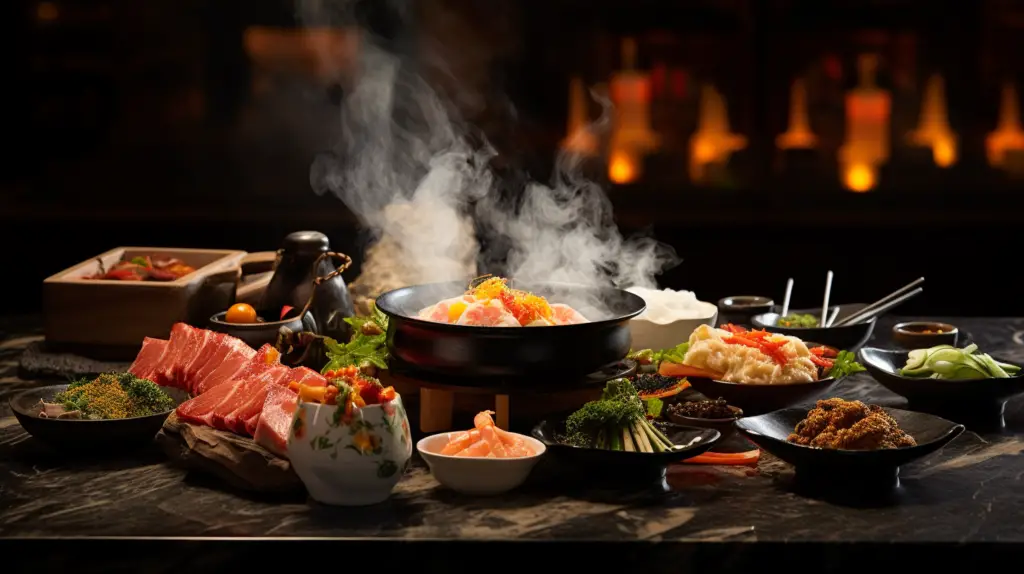Fusion cuisine, a culinary concept that has gained immense popularity in recent years, represents a harmonious blend of diverse food traditions. This innovative style of cooking, particularly in the context of merging Western techniques with Japanese flavors, offers an exciting and unique dining experience. The Japanese restaurant landscape, known for its meticulous attention to detail and flavor, has embraced this concept, giving birth to a range of innovative dishes that blend different culinary traditions. In this exploration, we delve into the heart of fusion cuisine, highlighting how Western techniques enhance and complement traditional Japanese flavors.
The Essence of Fusion Cuisine
Fusion cuisine is more than just a mix of ingredients from different cultures; it’s an art form that requires a deep understanding and respect for the culinary traditions being fused. It’s about finding the perfect balance, ensuring that neither tradition overshadows the other. In the case of Japanese-Western fusion, it involves the delicate intertwining of the subtle, umami-rich flavors typical of Japanese cuisine with the bold and often hearty techniques found in Western cooking.
Historical Roots and Evolution
The roots of fusion cuisine can be traced back to various historical periods where cultures interacted and influenced each other’s culinary practices. However, the modern concept of fusion cooking gained momentum in the late 20th century. Chefs began experimenting with crossing culinary borders, driven by globalization and a growing curiosity for different food cultures. Japanese-Western fusion, in particular, gained popularity as chefs explored ways to incorporate Japanese ingredients like miso, wasabi, and soy sauce into Western-style dishes.
Innovative Dishes Blending Traditions
At the forefront of this culinary fusion are innovative dishes that showcase the best of both worlds. For instance, a Japanese-inspired risotto, where traditional Italian Arborio rice is cooked with a dashi broth instead of a typical chicken or vegetable stock, highlights this blend. The umami from the dashi infuses the risotto with a distinctly Japanese flavor, while maintaining the creamy texture that is quintessential to the Italian dish.
Another example is the reinterpretation of classic French dishes using Japanese ingredients. Imagine a beef bourguignon where the beef is marinated in sake and soy sauce, adding layers of depth and umami to the rich, wine-infused sauce. This type of dish exemplifies how Japanese flavors can elevate a traditional Western recipe
Techniques and Ingredients: A Creative Union
The fusion of Western cooking techniques with Japanese flavors is not just about the recipes but also the methods and ingredients used. Techniques like sous-vide, a method of cooking food slowly in a precisely controlled water bath, are employed to prepare traditional Japanese ingredients like fish, resulting in perfectly cooked, flavor-infused dishes. The use of Japanese ingredients such as yuzu, a citrus fruit, in Western-style desserts like cheesecake, brings a refreshing twist to the familiar.
The Role of Presentation and Aesthetics
In Japanese cuisine, presentation and aesthetics play a crucial role, and this philosophy is carried into its fusion with Western cuisine. Dishes are presented artistically, balancing color, texture, and shape to enhance the overall dining experience. This attention to detail in presentation is a tribute to the Japanese tradition of respecting the visual aspect of food, an element that is now being infused into Western dining practices as well.
Conclusion: A Culinary Symphony
Fusion cuisine, particularly the blend of Western techniques with Japanese flavors, is a testament to the endless possibilities in the culinary world. It’s a celebration of diversity, creativity, and innovation. This culinary fusion is not merely about combining flavors and techniques; it’s about creating a symphony where each ingredient and method plays a crucial role in harmonizing the final dish. As fusion cuisine continues to evolve, it invites us to explore and appreciate the beauty of bringing different culinary worlds together, creating experiences that are as delightful to the palate as they are to the soul.

